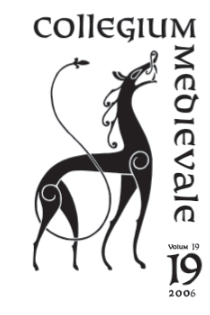Sammendrag
In an article published 1993 Carol J. Clover argues that the gender-system in thirteenth-century Iceland was a one-gender-system, where that gender was male and all other individuals were characterised by their lack of maleness. She bases her argument on the words úmagi, úmegð, 'those who cannot maintain themselves' which she connects to women. My survey of the use of these words shows that no such connection exists. She also claims that the scarce interest in women or womens´ sphere in the sagas points to a structure where women were held in contempt for not being men - as indeed were all other úmagar: cripples, aged people, children and so on. I contend, however, that the sagas' silence in this area cannot in itself be construed as a prejudice against women. Since female activity that drives the plot onwards, such as sourcery or whetting, is common in the sagas, we should conclude that interest in any activity to a large extent is due to its narrative potential.

Dette verket er lisensiert under Creative Commons Attribution-ShareAlike 4.0 International License.
Opphavsrett 2006 Mikael Males

